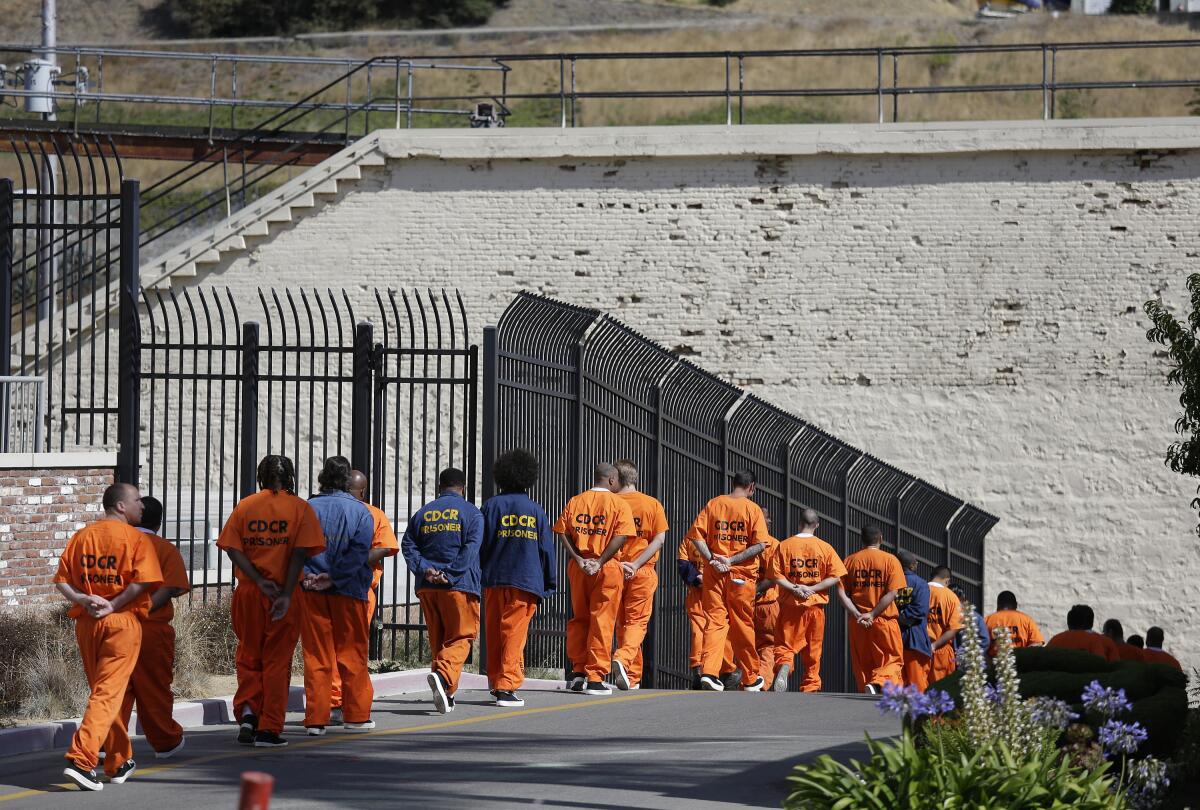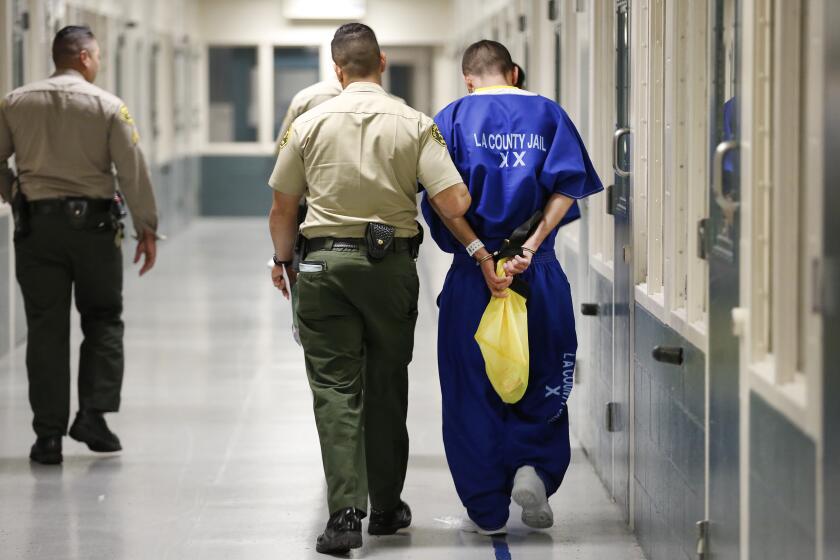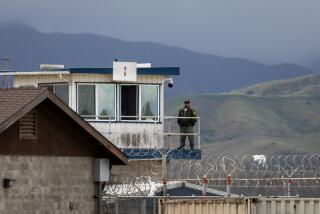Opinion: California has a $38-billion deficit. So why are we still paying for prisons we don’t need?

- Share via
Facing a state budget deficit of at least $38 billion, Gov. Gavin Newsom should be rethinking his expensive commitment to the state’s traditional system of mass incarceration. While insisting he will create a kinder, gentler brand of California prison, the governor has authorized $1 billion in raises for corrections officers and hundreds of millions more for prison buildings despite a steady decline of the incarcerated population and skyrocketing costs.
Prison expansion hasn’t just contributed significantly to our budget deficits for three decades. It’s also caused intergenerational harm to Black communities and other marginalized Californians despite unprecedented public awareness of the systemic problems and wasteful spending endemic to state prisons.
It’s not as if California voters, activists and legislators haven’t taken steps to address this. The state’s 2011 prison realignment was a turning point in reducing incarcerated populations, though the savings were often mismanaged and diverted to law enforcement rather than more effective community initiatives. It was buoyed by voter mandates, legislative reforms and culture shifts that finally confronted draconian sentencing practices. Thousands more were released from overcrowded prisons at the height of the pandemic, bringing the state’s prison population below 100,000 for the first time in 30 years.
California should follow Los Angeles County’s lead and consider safer, more effective and less costly responses to crime than long prison terms.
And yet the California Department of Corrections and Rehabilitation continues to struggle with such basics as providing mental health care, costing taxpayers millions in fines, and preventing sexual violence. Prison guards’ pay, meanwhile, continues to climb at triple the rate of inflation, driving annual costs past $130,000 per prisoner.
Newsom’s experiment with Nordic-style incarceration, dubbed the California Model, doesn’t adequately confront the problems plaguing California prisons. It might even be a Trojan horse for more irresponsible prison spending.
While an overhyped retail crime wave has been used to justify massive law enforcement spending in Newsom’s 2024-25 budget proposal, crime rates remain near 30-year lows. Reviving “tough on crime” policies and dumping more billions into prison systems should be nonstarters in a supposedly progressive state — especially while evidence-based solutions that would actually improve public safety remain severely underfunded.
California’s daunting $32-billion deficit presents the perfect opportunity to curb out-of-control spending on the state’s sprawling prison system.
California’s nonpartisan Legislative Analyst’s Office anticipates a surplus of 20,000 state prison beds by 2027. Closing 10 state prisons could save billions to address fiscal challenges and fund more effective public safety measures.
Newsom touts the potential savings from three prison closures on his watch but has been silent on plans for more, ignoring fellow Democrats in the Legislature and budget analysts who have called for closing an additional five. New York Gov. Kathy Hochul’s decision to close up to five more state prisons — for a total of 11 — is bold. Newsom should be leading on this, not playing catch-up.
But prison closures alone won’t be enough to address out-of-control corrections spending. The state also has to take on special interest groups such as the California corrections officers, who wield outsize power in Sacramento, to ensure that staffing and pay levels don’t undo any future savings.
Given the deficit, the corrections budget should be prioritizing the needs of incarcerated people and aiming for their successful reintegration. The governor’s proposed new $360-million building at San Quentin, the cost of which has been criticized by his own advisory council, would amount to a misallocation of funds. True rehabilitation is challenging within prison confines and not served by expensive infrastructure projects.
A responsible budget proposal should not abandon people at society’s margins. It’s unacceptable to use jails and prisons as stand-ins for supportive housing or mental health facilities, warehousing people who have nowhere else to go. The solution to homelessness is housing first, and the answer to the mental health crisis is accessible care. That means spending on social welfare and infrastructure projects: treatment facilities, affordable housing and community-based reentry programs.
California has an opportunity to shift its focus before the budget is revised in May and approved by the Legislature in June. Closing prisons and expanding public services would reflect the needs and values of our state while helping to put our finances in order.
This is a moral as well as a fiscal issue. There are too many prisons and jails in California, and despite our progress, there are too many people locked up in them.
Brian Kaneda is the deputy director of Californians United for a Responsible Budget.
More to Read
A cure for the common opinion
Get thought-provoking perspectives with our weekly newsletter.
You may occasionally receive promotional content from the Los Angeles Times.












